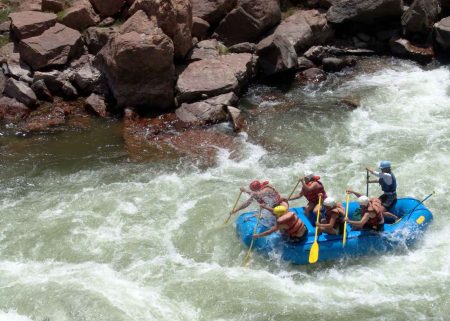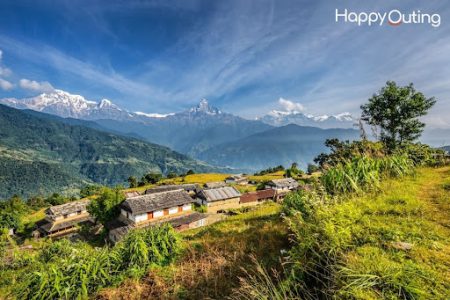Island Peak Climbing is considered one of the biggest challenges for trekkers in Nepal as an introduction to mountaineering. But there is a danger beyond the thrill: altitude sickness. Making it past the altitude dangers during your Island Peak climb is more than just fitness or motivation – it’s also about expertise, preparation, and vigilance. At those extreme altitudes, however, your body doesn’t respond like it does to being locked in a hot car — altitude sickness can kill.
The best way to avoid altitude sickness is to ascend gradually. The majority of Island Peak itineraries involve a gradual acclimatization, usually beginning with the Everest Base Camp trek or by taking a detour to Chhukung. These pre-climb treks also serve as an appetizer, a chance for your body to acclimate gradually to higher altitudes. If you rush up too fast, don’t give yourself the time required, or don’t take necessary acclimatization days, you greatly increase your risk of Acute Mountain Sickness (AMS), High Altitude Pulmonary Edema (HAPE), or High Altitude Cerebral Edema (HACE), any one of which can ruin an expedition—or kill you.
Survival, of course, is fully dependent on hydration. Your body dehydrates at altitude quicker because the air is drier and your breathing rate is higher. 3-4 liters of water every day allows oxygen to circulate properly. You should also not drink alcohol or caffeine, which are dehydrating and can disturb sleep patterns, she added. Nutrition is important, too — if you’re eating meals that are rich in carbohydrates, you’ll be feeding your body the energy it needs to deal with the stress of altitude.
Early detection of the signs of altitude sickness is key. Symptoms vary, but typically include headaches, decreased appetite, nausea, dizziness, and fatigue. These can seem minor at first, but are never something to be brushed off. The golden rule: If you’re feeling worse, head back down. Never attempt to push through, hoping they will go away. A pulse oximeter can provide a helpful indication of your blood oxygen levels, and is worth bringing, but nothing should take the place of listening to your body.
Diamox (Acetazolamide) is a commonly used drug to help with acclimatization. Although it is not a cure, it can help the body adapt more quickly by increasing unimpeded breathing. The broader your options, the more armed you can be with medical information because you should take one or a combination of these things with a degree of caution, citing drug interaction, among other things — ask your medical professionals. Some trekkers carry dexamethasone or portable oxygen, but these are generally for use in an emergency.
On the summit day, you have a huge altitude gain to make in a short time, which puts you further at risk for altitude sickness. Start early, and go at your own pace. And talk to your guide about how you are feeling. Don’t compare your time to others, the key is to stay within your own physicalist limitations.
You don’t conquer altitude threats on Island Peak with luck or pluck. It has to do with respecting the mountain, listening to your body, and doing good preparation. The peak may be non-technical in mountaineering speak, but the altitude alone is a serious endeavor. By acclimatizing slowly, staying hydrated and fed, and monitoring your symptoms closely, you also prepare yourself to have the best odds of not just surviving, but summiting successfully and safely.
Understanding Altitude Sickness And Dangers of Island Peak: Analysis of Altitude Sickness And Its Dangers. Browse us here!
Mountain Sickness Mountain sickness is the major problem while trekking to the Island Peak. Even as you ascend higher, above the elevation of a mile, continuing toward the summit’s height of 20,310 feet, your body grapples for oxygen. This lack of oxygen results in altitude-related conditions such as Acute Mountain Sickness (AMS), High Altitude Pulmonary Edema (HAPE), and High Altitude Cerebral Edema (HACE). While AMS is at least common and generally reversible with rest and acclimatization, HAPE and HACE are potentially life-threatening and demand emergent descent and medical intervention.
AMS symptoms consist of headache, fatigue, dizziness, nausea, with sleep disturbances. I’m a trekker, and trekkers rarely recognize or minimize these warning signs. However, ignoring them can quickly progress to more serious symptoms.
What adds to the complexity of Island Peak is that the summit push generally comes after days of trekking, usually down a high route like the Everest Base Camp trail. Many trekkers arrive already tired, the worse for their body’s capacity for additional adaptation.
You need to know and be aware of what is happening to your body at altitude to survive. Spotting symptoms early and acting responsibly — whether back at base resting or descending some 3,000 feet — can mean the difference between summiting and being medically evacuated. You cannot waiver in consciousness and presence in response to high altitude and its demanding challenges if everything is going to go safely, Island Peak-wise.
The Case for a Slow Increase in Elevation
The most successful way of avoiding an altitude-related problem on Island Peak Trek is to allow your body to adjust to the altitudes gradually through acclimatisation. This requires gradual ascent, with not more than 300–500 metres of sleeping altitude gain per day once above 2500m. Most Island Peak trips include a trek along the Everest Base Camp or Gokyo route as an acclimatization exercise.
Strategic rest days in places such as Namche Bazaar, Dingboche, and Chhukung are indispensable. These breaks enable your body to make additional red blood cells and acclimate to thinner air. Climb high, sleep low. Lighter and occasional exertion to higher elevations during rest days, followed by sleeping at a lower elevation, is a well-known method — a technique called “climb high, sleep low.”
If you skip or abbreviate that rest, you are increasing your risk for AMS, even if you are feeling strong. Some trekkers make the error of ascending too fast and feeling good, only to develop symptoms suddenly and severely as they climb higher.
A well-designed itinerary with time included for acclimatization is not just about comfort, but also about safety. Absolutely. Trekkers who allow their bodies to gradually acclimate have a very small chance of developing severe altitude problems. The ascent to the summit of Island Peak is already challenging; being well-acclimatized is what gives you the physical and mental resources to make that happen and greatly increases the chance of success.
Identifying the Symptoms of Acute Mountain Sickness
Early recognition of the signs and symptoms of Acute Mountain Sickness (AMS) is particularly important for trekkers attempting Island Peak. AMS does not hit every trekker, but it can come out of nowhere, regardless of age, fitness, or how many treks you have under your belt. Understanding what to watch out for enables you to act promptly before it progresses into HAPE or HACE.
Typical AMS symptoms are headaches, nausea, lack of appetite, dizziness, and fatigue. You may also have trouble sleeping, feel uncomfortable when lying down, and notice swelling in the hands, face, and feet. If any of these appear in the wake of an ascent to higher elevations, one must stop, rest, hydrate, and not go any higher.
When there is deterioration, or even no improvement, after 24 to 48 hours of acclimatization, the best and safest agency may be to descend. Do not try to “power through” the pain, especially when you’re close to Island Peak’s high-altitude camps such as High Camp (around 5,600 meters). AMS may develop quickly at such altitudes.
It’s better to be proactive than to have to react. The major strategies are to avoid alcohol, remain well-hydrated, get plenty of sleep, and ascend slowly. Even with all precautions, however, symptoms can still occur. Immediately respect any symptom of AMS. A fast decision to rest or go halfway down may save your health — and perhaps your life — on the mountain.
Hydration and Nutrition at Altitude
Hydrating and eating properly. These are two of the most underestimated things you need to get right to survive at high altitude during the Island Peak expedition. Above 3,000 meters, you lose moisture more rapidly because you are breathing harder and the mountain air is drier. This will dehydrate you and make it harder for your body to adjust, and make you more prone to altitude sickness.
Try drinking 3-4 Liters of Water a day during the Trek. Some other electrolyte powders or packages of oral rehydration salts are also helpful, particularly if you’re hiking long days strenuously. Limit alcohol and caffeine as they are diuretics and will result in fluid loss.
Nutrition is equally vital. At altitude, your body burns more calories in a day just to keep warm and move, and your energy demands can rise precipitously. Emphasize high carbohydrate meals like rice, pasta, potatoes, and breads – circumstances permitting, most teahouses on the route serve these. Carbs are readily digested with available energy, a key aspect when oxygen is scarce.
You will find it easier to eat smaller, more frequent meals than large portions. And while you might not feel hungry (we often lose our appetites at high altitudes), you need to keep eating to keep up with the demands of the trail.
Committing to consistent hydration and thoughtful fueling won’t eliminate all risks of altitude sickness, but it will help improve your body’s fortitude and temper you with the energy you’ll need to make a successful and safe ascent to the summit of Island Peak.
Using Drugs Such as Diamox for Acclimatization
Congratulations on your Island Peak trek. A lot of trekkers climbing Island Peak take Diamox (Acetazolamide) for acclimatisation to assist in avoiding AMS symptoms. This medication works by slightly acidifying the blood, which encourages deeper and more frequent respiration — an organic means to crank up oxygen uptake.
This is typically prescribed to be taken 1–2 days before you reach 3,000 meters and continued throughout the climb. Doses commonly used are 125-250 mg twice a day, but one should do so only with the advice of a healthcare provider, and particularly if one has a sulfa allergy or other underlying medical problems.
Although it does aid massively in the acceleration of acclimatization, it’s no replacement for good altitude techniques. It needs to be done with a slow climb, rest days, drinking plenty of water, and recognising the symptoms of altitude sickness. Tingling of fingers and toes, increased urination, and mild alteration of taste are common side effects of Diamox; they can be well tolerated by most patients and are short-lived.
Some hikers also pack dexamethasone or portable oxygen as emergency supplies, in particular when the High Camp is reached or a summit push is made, as air becomes very thin.
As with all medication options, talk with your doctor well before your trek. When utilized wisely and responsibly , however, Diamox can help reduce your risk of AMS and turn your Island Peak trek into a much safer and enjoyable experience.
The Importance of Rest Days for Successful Acclimatisation
Island Peak Climb Down days are not luxury options, they are pivotal components of your acclimatization program for your Island Peak climb. The quickest way to get altitude sickness is to ascend too fast without letting the body adjust to higher altitudes. The rest days enable your body to gradually acclimate to the thinning air by giving it time to make physiological adjustments.
On the way to Island Peak, the usual acclimatization points are Namche Bazaar (3,440m) and Dingboche (4,410m). Some schedules feature a third rest day at Chhukung (4,730m), the stop before setting out for Island Peak Base Camp. The same could apply to “trek to higher elevations by day and back down to sleep”: that is the climb-high-sleep-low strategy for acclimatisation.
The combination of cold and altitude is a lot more exhausting than many trekkers imagine. Rest days are not just for the body — they give your mind a chance to recharge and your system an opportunity to settle. Skimping or rushing their execution increases your likelihood of AMS and decreases your effectiveness on summit day.
A successful summit of Island Peak is more about racing smart than it is about speed. A dedicated rest day can be the difference between a safe ascent and an evacuation at altitude.
Listening to Your Body in the Himalayas
In high-altitude trekking and climbing, such as treks to Everest Base Camp, including Island Peak, nothing but yourself is your best friend/ guide. However much you’ve trained, however good you’re feeling, your body has to be in charge of your pace and your decisions. Failing to pay attention to early warning signs of altitude and mountain-related stress can have severe repercussions, from mild cases of AMS to severe HAPE or HACE.
Your intensity, breath, and mental clarity give you instant feedback. I feel the brain of my partner on my ear, his breathing — if it’s the least bit labored, it’s a sign to stop, rest, or descend.” If you start to experience unusual headaches, fatigue, dizziness, or if you lose your coordination, it’s time to stop, rest, or descend. Even mild symptoms can quickly become severe at such high altitudes.
A lot of trekkers are guilty of comparing their pace with others. But altitude affects everyone in their individual, mysterious way, irrespective of how fit and experienced they are. It could be that someone slower deals with the altitude more effectively just because they’re listening to their body, giving it time to adapt.
The conditions are generally harsher on Island Peak, particularly between High Camp and the summit. The air is much thinner, and the side of the climb is technical. Notice signs of overexertion or shortness of breath.
It’s empowering to have self-awareness. If you are not feeling 100 percent, tell your guide and do not be afraid to stop or go down. The mountain is not going anywhere. Instead, it’s your health and safety that will decide whether your journey will be a success or a cautionary tale.
Getting Head High: Advice for High-Altitude Climbing – Preparing Mentally for High Altitude
Mental – this is often the least thought about aspect of preparation for Island Peak, but essential in coping with the altitude and reaching the summit. You are not just climbing to 6,189 meters — you are climbing psychologically too. The harsh conditions, the isolation, and the symptoms of altitude can exact a mental toll that many trekkers quickly begin to find overwhelming.
At high altitude, there is erratic weather, fatigue, sleeplessness, moments of insecurity about one’s. It’s not just the cold: even the most physically resilient climbers must mentally adjust to sustained stress, particularly the cold, physical push of summit day, which begins long before dawn. The process of building that mental stamina starts long before the boat is launched or the kayaks are wet. Using mindfulness, positive self-talk, and guided breathing can be beneficial in high-stress situations on the trail.
You should also try to keep things in perspective and recognize that you will not be enjoying every aspect of the expedition. There will be discomfort. There will be doubt. It’s key to keep in control, to not become emotional, to not become your enemy, and to trust the work you have put in and your guide.
Some find peace through guided meditations, journaling, or simply silent contemplation as they run or walk. Support from your trekking group or climbing partner also means a lot.
In the end, it’s your head that is going to command your body to continue — or quit. It’s just as vital to train your mind as it is to train your muscles if you want to survive and relish a high-altitude ascent such as Island Peak.
Emergency Response Plan and Facility Evacuation Capability
Despite adequate planning and acclimatization, however, emergencies happen on Island Peak regularly, thanks to erratic altitude effects. Which is why it is important to know your emergency response plan before your boots hit the mountain.
It is important to consider contingency in every trekking itinerary of Island Peak. This includes having access to communication, such as satellite phones, walkie-talkies, or cell signals (available in some places). Your guide or leader should be trained in high-altitude first aid and be able to identify and treat AMS, HAPE, and HACE.
Climb Island Peak In worst cases, evacuation is needed. The quickest means of descending to a lower altitude is a helicopter evacuation, which is easily arranged in Nepal, at a cost. Also, ensure that you have a policy that includes trekking and climbing at high altitudes (6,000m and above). Helicopter evacuation can cost thousands of dollars if you’re not adequately insured.
Some teams take portable oxygen bottles or Gamow bags for emergency relief while waiting for evacuation. Your guide should also have drugs such as dantrolene or dantrolene.
Always know the signals indicating when you should turn back, and be in deference to the judgment of those with lots of experience under their belt. The mountain is no place for ego or approximations. Being ready for emergencies — even the ones that don’t occur — so that you can enjoy the challenge and make it home safely.
Recovery following the climb and monitoring of symptoms upon descent
The moment trekkers summit Island Peak and are on their way down, many have a sense of false security — but that’s not to say the danger of altitude-related complications has passed entirely. The recovery process starts after you submit, and it is very important to take care of your body while you’re descending and after.
Symptoms of altitude sickness may persist or recur after descending to lower altitudes. Watch out for persistent headaches, fatigue, or shortness of breath in yourself. These symptoms will not get any better while at high altitude; if they do not get better 24–48 hours after going to a lower altitude, seek medical attention.
Continue to pay attention to hydration in the post-race period. Your body has undergone physical exertion and high-altitude stress, which drains energy and fluids. Eat healthy food, gentle stretches, and rest as much as you can. Give yourself a couple of days to unplug if you are returning to Namche or Lukla.
Mental decompression is enough of a factor, too. Reflecting on the journey — in a journal, with other trekkers, or just with your thoughts — helps process what you’ve done and acknowledge the changes you’ve achieved.
Altitude-induced fatigue doesn’t dissipate from associated symptoms for days, even weeks. Don’t become fully physically active again too quickly. A successful summit of Island Peak is not just arriving, but also returning, strong, healthy, and in awe of your body’s endurance.
How to Survive High Altitudes
Living at high altitude is a blend of the physical and being strategic about acclimatisation and being more intuitive. As you go up, the air gets thinner, so there is less oxygen available to your body. That’s what will make you feel altitude sick enough that you can get milder symptoms (headache, dizziness) or severe and possibly deadly (HAPE, HACE).
The best survival strategy is slow ascent. Never ascend sleeping more than 300-500 metres per day above 2,500m and build in rest/acclimatisation days. It allows your body to adjust and produce more red blood cells so it can more efficiently use the limited oxygen in the air.
Keep well-hydrated—aim for 3 liters per day—and eat high-carbohydrate meals to fuel the body during exercise. Skip alcohol and sleeping pills: These can inhibit breathing and make acclimatization worse.
Another measure: Keep track of your health. Learn to recognize the early symptoms of AMS and don’t hesitate to descend at once if your condition becomes worse. Take drugs like Diamox (as prescribed by a physician), and use pulse oximeters to check for oxygen saturation when possible.
Finally, that mental discipline is critical. Relax, don’t set a fast pace, and go with how you feel. High-altitude survival is not simply a matter of strength — it means respecting the mountain, being prepared well, and taking action early when something feels off.
What to Do If You Have Altitude Sickness While Hiking?
Should you start experiencing symptoms of altitude sickness on the trail — headache, dizziness, nausea, fatigue, or insomnia — the first and most crucial step is to stop ascending abruptly. Mild symptoms can be managed with rest, fluids, and observation, but should not be ignored.
Rest, drink plenty of water, and keep an eye on how you’re feeling. Do not make physical effort; try to relax. If they last longer than 24 hours or worsen (especially if you also begin vomiting, become confused, or have trouble breathing), you need to get to a lower altitude — usually at least 500–1,000 meters lower — as soon as possible.
Diamox (Acetazolamide) will help your body to acclimatize more quickly by increasing your breathing rate, but it is more preventative or supportive treatment than a cure. You can also try ibuprofen or paracetamol for headaches, and anti-nausea medication if necessary.
In extreme conditions, were High Altitude Pulmonary Edema (HAPE) or High Altitude Cerebral Edema (HACE) is suspected, DESCENT IS LIFE-SAVING. If available, give oxygen; consider a portable hyperbaric bag (Gamow bag) to simulate descent while awaiting evacuation.
High-altitude sickness is unpredictable and can strike anyone. Early reaction, not pushing to your limits and being ready to turn around, even if it messes with your plan, could mean the difference between a safe recovery and a medical emergency.
How Do You Get Ready for High-Altitude Hiking?
When it comes to preparing for high-altitude hiking, it’s part physical training, part logistics, and part mental. High altitude poses particular challenges — diminished oxygen, extreme weather, and long physical exertion — so you must start training well before your trip.
Start a cardiovascular exercise program 8-12 weeks before your trek. Put your focus on cardiovascular activities such as hiking, running, cycling, or swimming, doing so 4–5 days each week. Add in strength work for your legs, core, and back as well, particularly through movements such as squats, lunges, and step-ups. You should also train with a loaded backpack to simulate the effort of altitude trekking.
Then, simulate the journey by trekking on hills at higher and higher altitudes, if you have mountains nearby. Otherwise, do stairs or use hills with a backpack to simulate gain.
Begin researching altitude dangers and how to acclimate responsibly. Create a gradual itinerary with acclimatization days. Educate yourself about altitude sickness and prepare with medications such as Diamox (under medical supervision).
Hydration and eating patterns may also need to be modified. Get used to drinking 3–4 L of water a day and eating balanced, high-carb meals. Psychologically, be ready for long days, exhaustion and shitty living situation.
Finally, make sure your equipment is trail-tested and worn in; nothing ruins high-altitude hiking like blisters or ill-fitting boots. The more you prepare, the less you need to worry about the risks of altitude.
How Do You Train on Altitude Without Going to Altitude?
If you don’t live at altitude but hope to prepare for a high-altitude trek or climb, you can still train effectively by simulating what your body will undergo under the assault of low-oxygen conditions by working on the cardiovascular demands of elevation gain and building cardiovascular efficiency. While you can’t exactly mimic the reduced oxygen levels, you can train your body to perform better in physical stress by recovering more quickly.
Begin with a strong cardio workout program, which involves activities such as hiking, stair climbing, running, swimming, biking, at least 4–5 days a week. HIIT and long cardio sessions are especially effective in building up the heart and lung capacity required for elevation challenges.
Factor in weighted hikes or stair sessions with a backpack that allows you to experience the load that you will have to carry. Condition your legs, back, and core for long days on the trail or on the rock. Strength endurance counts when available oxygen is in short supply.
Also, try wearing altitude training masks that limit the flow of air to mimic breathlessness. Though they don’t lower the supply of oxygen like true altitude, they can make your respiratory muscles more accustomed to the reduced flow of air.
If you have the means, there are hypoxic training facilities or hypoxic tents; they simulate high altitude and help you produce more red blood cells.
Last, but not least, allow for proper hydration, nutrition, and mental preparation. Altitude-free training works just fine, assuming your plan is rigorous, purposeful, and tailored to the demands of your specific trip.










